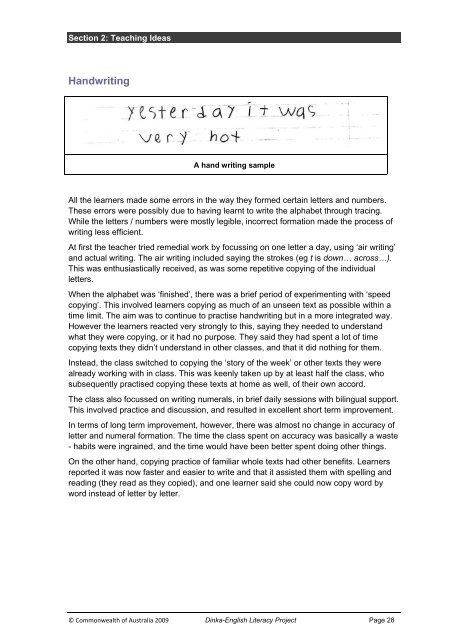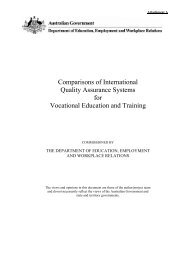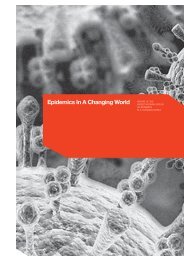First Language (Dinka) Literacy as a Foundation for English ...
First Language (Dinka) Literacy as a Foundation for English ...
First Language (Dinka) Literacy as a Foundation for English ...
Create successful ePaper yourself
Turn your PDF publications into a flip-book with our unique Google optimized e-Paper software.
Section 2: Teaching Ide<strong>as</strong><br />
Handwriting<br />
A hand writing sample<br />
All the learners made some errors in the way they <strong>for</strong>med certain letters and numbers.<br />
These errors were possibly due to having learnt to write the alphabet through tracing.<br />
While the letters / numbers were mostly legible, incorrect <strong>for</strong>mation made the process of<br />
writing less efficient.<br />
At first the teacher tried remedial work by focussing on one letter a day, using ‘air writing’<br />
and actual writing. The air writing included saying the strokes (eg t is down… across…).<br />
This w<strong>as</strong> enthusi<strong>as</strong>tically received, <strong>as</strong> w<strong>as</strong> some repetitive copying of the individual<br />
letters.<br />
When the alphabet w<strong>as</strong> ‘finished’, there w<strong>as</strong> a brief period of experimenting with ‘speed<br />
copying’. This involved learners copying <strong>as</strong> much of an unseen text <strong>as</strong> possible within a<br />
time limit. The aim w<strong>as</strong> to continue to practise handwriting but in a more integrated way.<br />
However the learners reacted very strongly to this, saying they needed to understand<br />
what they were copying, or it had no purpose. They said they had spent a lot of time<br />
copying texts they didn’t understand in other cl<strong>as</strong>ses, and that it did nothing <strong>for</strong> them.<br />
Instead, the cl<strong>as</strong>s switched to copying the ‘story of the week’ or other texts they were<br />
already working with in cl<strong>as</strong>s. This w<strong>as</strong> keenly taken up by at le<strong>as</strong>t half the cl<strong>as</strong>s, who<br />
subsequently practised copying these texts at home <strong>as</strong> well, of their own accord.<br />
The cl<strong>as</strong>s also focussed on writing numerals, in brief daily sessions with bilingual support.<br />
This involved practice and discussion, and resulted in excellent short term improvement.<br />
In terms of long term improvement, however, there w<strong>as</strong> almost no change in accuracy of<br />
letter and numeral <strong>for</strong>mation. The time the cl<strong>as</strong>s spent on accuracy w<strong>as</strong> b<strong>as</strong>ically a w<strong>as</strong>te<br />
- habits were ingrained, and the time would have been better spent doing other things.<br />
On the other hand, copying practice of familiar whole texts had other benefits. Learners<br />
reported it w<strong>as</strong> now f<strong>as</strong>ter and e<strong>as</strong>ier to write and that it <strong>as</strong>sisted them with spelling and<br />
reading (they read <strong>as</strong> they copied), and one learner said she could now copy word by<br />
word instead of letter by letter.<br />
© Commonwealth of Australia 2009 <strong>Dinka</strong>-<strong>English</strong> <strong>Literacy</strong> Project Page 28
















